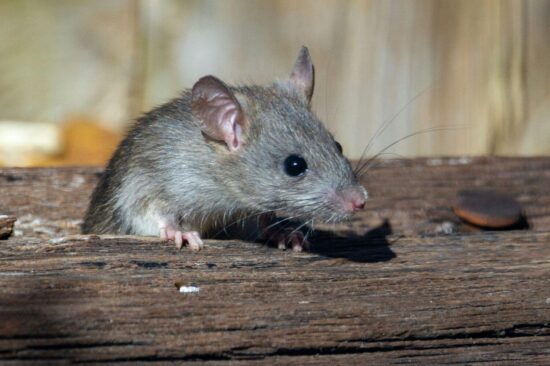Nobody wants to share their home with uninvited furry guests. Mice can cause serious problems, from chewing through wires to spreading diseases and contaminating food. The good news? There are many effective ways to keep these pesky rodents out of your space.
Finding the best mice repellent isn’t always straightforward because different methods work better in different situations. Some people need quick fixes for active infestations, while others want long-term prevention. The key is understanding that combining multiple approaches usually works better than relying on just one method.
This list shares plenty of mice repellent options, starting with products you can order online today and moving toward more comprehensive solutions. Remember, no single method is 100% effective on its own, but the right combination can keep your home mouse-free.
1. Peppermint Oil and Essential Oil Repellents
- Plant-based peppermint oil formula repels pests naturally
- Safe to use around pets, kids, and indoor living spaces
- Great for garages, attics, baseboards, and outdoor areas
- Fresh mint scent with long-lasting protection
Peppermint oil stands out as one of the most popular natural mice repellents, and there’s actually science behind why it works. The strong menthol compounds in peppermint oil irritate mice’s sensitive nasal passages and overwhelm their sense of smell. Since mice rely heavily on their noses to navigate and find food, this creates an environment they want to avoid.
You can find high-quality peppermint oil online from brands like Mighty Mint, which makes a concentrated 4% peppermint oil spray that’s stronger than most competitors. Other effective essential oils include eucalyptus, cinnamon, clove, and citronella. Each has compounds that mice find unpleasant.
There are several ways to use essential oils as a mice repellent. Soak cotton balls in the oil and place them near entry points, in cabinets, or anywhere you’ve seen mouse activity. You can also mix the oils with water in a spray bottle and apply to baseboards and corners. Some people use diffusers to spread the scent throughout larger areas.
The main downside is that essential oils lose their potency quickly. You’ll need to refresh cotton balls and reapply sprays every few days to maintain effectiveness. Also, be careful if you have cats or dogs, as some essential oils can be toxic to pets when ingested.
Many customers report good initial results with peppermint oil, especially when combined with other methods. While it won’t solve a major infestation on its own, it’s an affordable and safe starting point.
2. Commercial Rodent Repellent Pouches and Sprays
- Made with balsam fir oil — plant-based, non-toxic formula repels mice naturally
- Protects storage areas, vehicles, basements, attics, and sheds for up to 90 days
- No-mess pouches — simply place and replace when scent fades
- EPA registered, USDA BioPreferred, and made in the USA by EarthKind
Ready-made repellent products take the guesswork out of mixing your own solutions. These commercial options often combine multiple active ingredients and come in convenient packaging that’s easy to use around your home.
Fresh Cab Botanical pouches are EPA-registered and contain balsam fir oil as their main ingredient. Each pouch covers about 125 square feet and lasts for several months.
Rodents Away Odor Free pouches live up to their name by repelling mice without creating noticeable odors for humans. They’re safe around pets and children, making them a good choice for families. Harris Rodent Repellent spray combines peppermint and cinnamon oils in a ready-to-use formula.
For people with vehicles, Exterminator’s Choice makes a spray specifically designed to keep mice out of cars, RVs, and storage areas. This can prevent expensive damage to wiring and upholstery.
The convenience factor makes these products appealing to busy homeowners. You simply place pouches in problem areas or spray around entry points. Most need replacement every 30 to 90 days, depending on the product and conditions.
3. Steel Wool and Exclusion Materials
- Expanding foam blocks mice from entering through cracks and gaps
- Forms a long-lasting, airtight, and water-resistant seal
- Pesticide-free and safe for use around homes and garages
- Can be trimmed, sanded, and painted once cured
While sprays and oils can deter mice, physically blocking their entry points provides more reliable long-term protection. Mice can squeeze through holes as small as a quarter inch, so sealing these gaps is crucial for keeping them out.
Steel wool is particularly effective because mice cannot chew through the metal fibers. However, steel wool alone isn’t enough since mice can pull it out of holes. The best approach combines steel wool with caulk or expanding foam to create a permanent seal.
Tomcat Rodent Block expanding foam is another popular option. This special foam is treated with ingredients that repel rodents, and it expands to fill gaps completely. It works well around pipes, electrical entries, and other areas where traditional caulk might not provide a good seal.
For larger openings like vents or chimneys, hardware cloth (wire mesh) provides sturdy protection. Quarter-inch mesh stops mice while still allowing air flow. Many sellers provide pre-cut pieces or rolls you can customize for your needs.
The main advantage of exclusion materials is their permanence. Once properly installed, they can last for years with minimal maintenance. Focus on common entry points like where pipes enter the house, gaps in foundation walls, and spaces around utility connections.
4. Ultrasonic Repeller Devices
No products found.
Ultrasonic repellers are among the most popular pest control products out there, despite mixed scientific evidence about their effectiveness. These devices plug into wall outlets and emit high-frequency sounds that are supposed to be unbearable to mice but inaudible to humans.
Popular models like Max Moxie pest repellers typically operate in the 22-65 kHz range. The theory is that these frequencies disrupt mice’s nervous systems and make them uncomfortable enough to leave the area.
However, research shows that ultrasonic devices have significant limitations. The sound waves can’t travel through walls or around furniture, creating “dead zones” where mice can hide. Even more problematic is that mice often become accustomed to the sounds over time, especially if food and shelter are readily available.
The Federal Trade Commission has warned manufacturers about making unsubstantiated claims regarding ultrasonic pest control. University studies generally show minimal long-term effectiveness for these devices.
That said, some people do see results, particularly when using ultrasonic repellers as part of a broader strategy. They work best in open areas without much furniture and when combined with other mice repellent methods. The key is having realistic expectations and not relying on them as your only defense.
5. Professional Snap Traps and Humane Trapping
- Designed to humanely capture mice without causing any harm
- The trap cage is easy to set up and use
- The trap cage has a large capacity, allowing it to trap multiple mice at once
- Made of high-quality materials that are durable and reusable
When you already have mice in your home, repelling them isn’t enough. You need to remove the existing population, and traps remain the most effective way to do this. The CDC and pest control professionals consistently recommend trapping as the gold standard for active infestations.
Traditional snap traps are widely available and remain highly effective when used correctly. Victor and Tomcat are popular brands that have been around for decades. The key is using enough traps and placing them properly. Experts recommend placing traps every six feet along walls where you’ve seen mouse activity.
Bait selection matters too. Peanut butter works better than cheese because its strong smell attracts mice and its sticky texture makes it hard for them to steal without triggering the trap. Small amounts work best since you want mice to work for the bait rather than being able to grab it easily.
For people who prefer not to kill mice, humane live traps allow you to capture and relocate them. Keep in mind that relocated mice often don’t survive in unfamiliar territory, so this method isn’t necessarily more humane than it appears.
Electronic traps represent a modern upgrade to traditional designs. These battery-powered units deliver a quick, humane kill and often indicate when they’ve caught something. Some models even send smartphone notifications.
6. Natural Home Remedies and DIY Options
Many household items can serve as improvised mice deterrents, though their effectiveness varies significantly. These DIY approaches appeal to people who want to try natural methods before investing in commercial products.
Ammonia-soaked rags placed strategically around your home can mimic the scent of predator urine, potentially deterring mice. However, ammonia is toxic and should be used carefully, especially around children and pets. Place soaked rags in small containers to prevent direct contact.
Used cat litter (from healthy, parasite-free cats) contains natural predator scents that may discourage mice. Some people place small amounts in areas where mice travel, though this obviously isn’t practical for homes without cats.
Dryer sheets tucked into storage areas, closets, and other spaces may help repel mice due to their strong fragrance. While not scientifically proven, many people report success with this method. The scent fades quickly, so regular replacement is necessary.
Mothballs contain naphthalene, which can repel mice, but they’re also toxic to humans and pets. If you choose this method, use extreme caution and keep mothballs away from living areas.
Spicy substances like cayenne pepper, hot sauce, or crushed red pepper flakes may deter mice when sprinkled around entry points. The capsaicin causes irritation, making treated areas unpleasant for rodents.
Coffee grounds, soap bars, and even aluminum foil are sometimes mentioned as deterrents, though scientific support is limited. These methods are inexpensive to try but shouldn’t be your primary strategy.
7. Physical Barriers and Complete Exclusion Systems
Creating a comprehensive barrier system around your home provides the most reliable long-term protection against mice. This approach focuses on eliminating every possible entry point rather than just deterring mice from areas they can already access.
Door sweeps are essential for sealing gaps under exterior doors. You can find various types, from simple brush strips to more sophisticated systems with multiple sealing surfaces. Even small gaps under doors can allow mice inside, especially during cold weather when they’re seeking warmth.
Weather stripping around windows and doors serves a dual purpose: it saves energy and keeps rodents out. Look for heavy-duty options that won’t compress or deteriorate quickly. Foam tape works for minor gaps, while rubber gaskets handle larger spaces.
For areas like vents and chimneys, hardware cloth provides protection while maintaining airflow. Quarter-inch mesh is small enough to exclude mice but large enough for proper ventilation. Securing the mesh with screws or heavy-duty staples prevents mice from pushing it aside.
Foundation gaps where siding meets concrete are common entry points that many homeowners overlook. These can be sealed with caulk, expanding foam, or metal flashing depending on the size of the gap.
Complete exclusion requires patience and attention to detail. You’ll need to crawl around your home’s perimeter, looking for any opening larger than a quarter inch. This includes areas around utility penetrations, exhaust vents, and structural joints.
8. Sanitation and Food Storage Controls
Mice enter homes looking for three things: food, water, and shelter. Eliminating food sources makes your home much less attractive to rodents and increases the effectiveness of other mice repellent methods.
Proper food storage starts with airtight containers that mice can’t chew through. Glass and metal containers work best, though heavy-duty plastic can also be effective.
Pet food presents a particular challenge since it’s often stored in basements or garages where mice are more likely to be active. Large metal containers with tight-fitting lids keep pet food fresh and inaccessible to rodents. Don’t leave pet food bowls out overnight, as even small amounts can attract mice.
Kitchen cleanliness plays a major role in prevention. Crumbs under appliances, sticky spills on shelves, and food residue on packaging all provide meals for mice. Regular deep cleaning of pantries, cabinets, and storage areas removes these attractants.
Garbage management is equally important. Mice can chew through plastic bags, so using metal or heavy plastic cans with tight lids prevents access. Taking garbage out regularly reduces odors that might attract rodents from outside.
Decluttering eliminates potential nesting sites and makes it easier to spot signs of mouse activity. Mice love building nests in piles of paper, fabric, and other soft materials. Storing these items in sealed containers protects them while removing habitat opportunities.
Water sources also attract mice, though they need less water than you might expect. Fixing leaky pipes, emptying standing water, and using dehumidifiers in damp areas like basements makes your home less appealing to rodents.
9. Cats as Natural Predators
The relationship between cats and mice has been recognized for thousands of years, but modern research shows that feline pest control is more complex than cartoons suggest. While cats can help with mouse problems, they’re not the reliable solution many people expect.
The mere presence of a cat can deter some mice through scent markers in cat urine and saliva. These pheromones trigger fear responses in rodents, potentially making them avoid areas where cats have been active. However, this effect varies significantly between individual cats and situations.
Hunting ability differs dramatically among cats. Some breeds like Bengals have stronger hunting drives, while many well-fed domestic cats show little interest in chasing mice. Age also matters, as older cats are generally less active hunters than younger ones.
University of Florida research found that mice often remain in homes with cats, though they may be less active in open areas. The study also noted that homes with both cats and dogs showed better results than those with cats alone.
There are downsides to relying on cats for mouse control. Mice can carry diseases that affect cats, potentially leading to expensive veterinary bills. Well-fed indoor cats may treat mice as toys rather than prey, sometimes bringing live mice into the house.
Outdoor cats face additional risks from predators, vehicles, and weather while potentially disrupting local wildlife populations. Many environmental groups discourage letting cats roam freely due to their impact on bird populations.
For people who already have cats, their presence may provide some deterrent effect. However, getting a cat specifically for mouse control isn’t recommended by pest control professionals. Cats work best as part of a comprehensive approach rather than as a standalone solution.
10. Professional Pest Control Services
Sometimes the best mice repellent strategy involves calling in experts. Professional pest control companies bring experience, specialized equipment, and access to commercial-grade products that aren’t available to consumers.
Pest control professionals start with thorough inspections to identify entry points, nesting areas, and the extent of infestations. They’re trained to spot signs that homeowners might miss and can determine whether you’re dealing with mice, rats, or other rodents.
Professional treatment plans typically combine multiple approaches: exclusion work, strategic trap placement, and ongoing monitoring. Many companies provide warranties or guarantees, returning for additional treatments if mice reappear within a specified timeframe.
Commercial-grade exclusion materials often outperform consumer products in durability and effectiveness. Professional installers also have experience with challenging areas like crawl spaces, attics, and complex architectural features.
The cost of professional service varies widely based on your location, the size of your home, and the severity of the problem. However, when you factor in the time spent on DIY efforts, the cost of multiple products, and potential damage from ongoing infestations, professional treatment often provides good value.
Many pest control companies now provide online booking and offer ongoing service plans that include regular inspections and preventive treatments. This approach catches new problems early before they become major infestations.
Consider professional help if you’ve tried multiple DIY methods without success, if you’re dealing with recurring problems, or if you’re uncomfortable handling traps and exclusion work yourself. Large infestations or situations involving structural damage typically require professional expertise.
Conclusion
The best mice repellent approach combines immediate action with long-term prevention. Starting with readily available products like peppermint oil sprays or commercial repellent pouches can provide quick relief while you work on more permanent solutions.
Essential oils and commercial repellents work well for minor problems and as supplements to other methods. Steel wool and exclusion materials provide lasting protection but require more effort to install properly. Traps remain essential for removing existing mouse populations.
Remember that mice are persistent and adaptable creatures. What works in one situation might not work in another, and methods that are effective initially may become less so over time. The key is staying vigilant and adjusting your approach as needed.
For best results, start with products you can order online today for immediate relief, then move toward comprehensive exclusion and sanitation practices. If DIY methods aren’t sufficient, don’t hesitate to contact professional pest control services.
Most importantly, act quickly when you notice signs of mice. Small problems are much easier to solve than large infestations, and early intervention can save you time, money, and stress in the long run.






